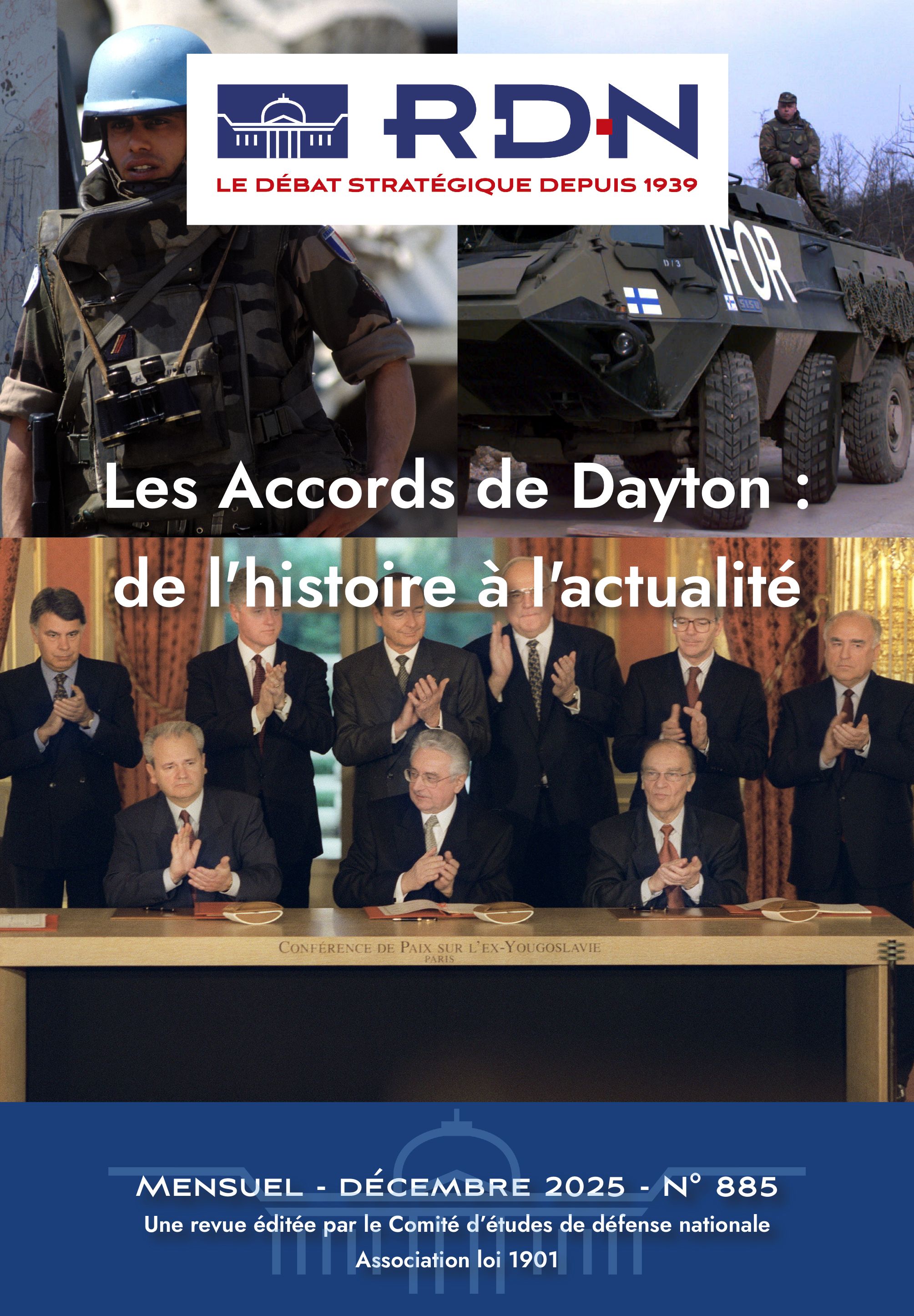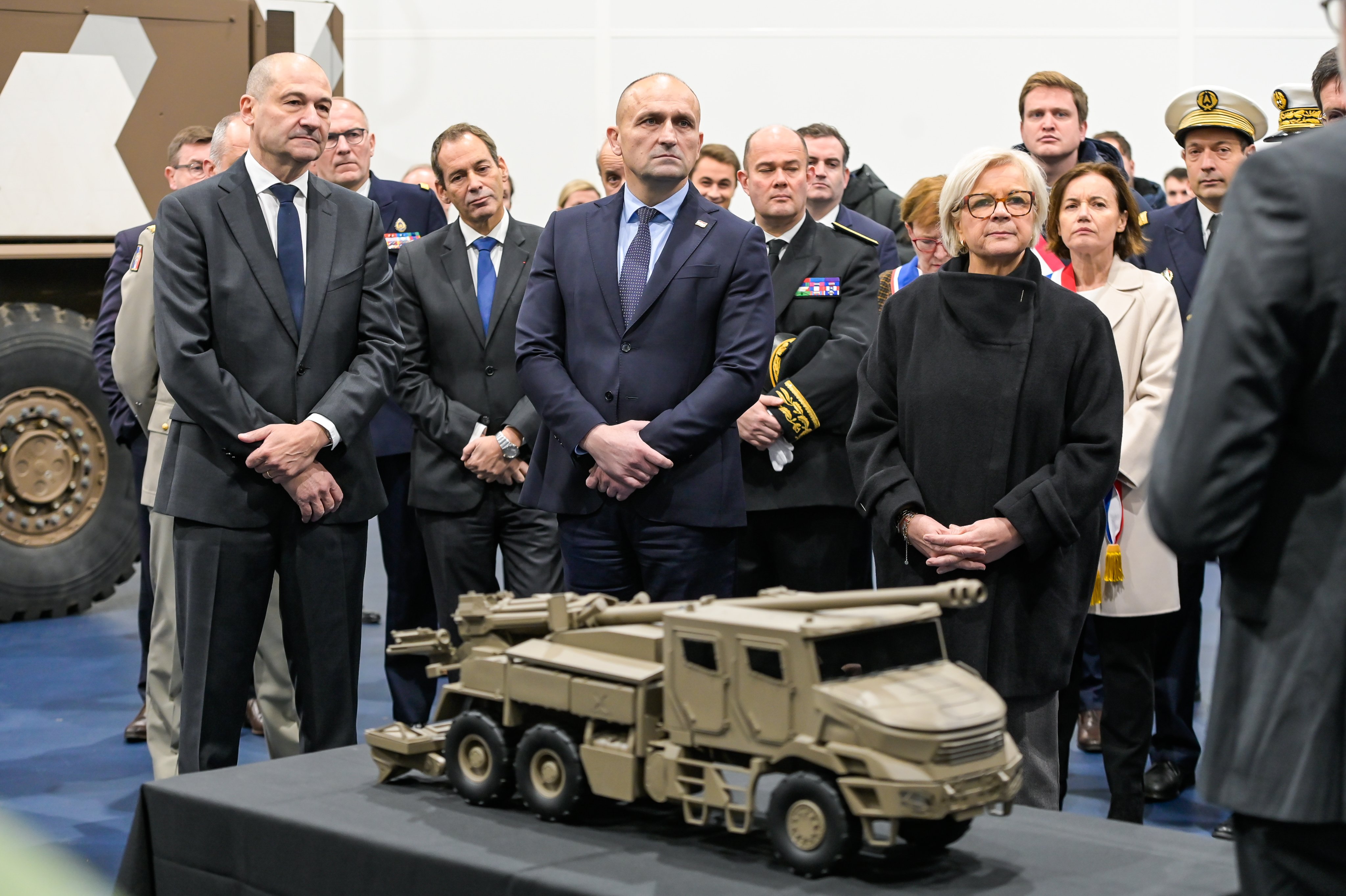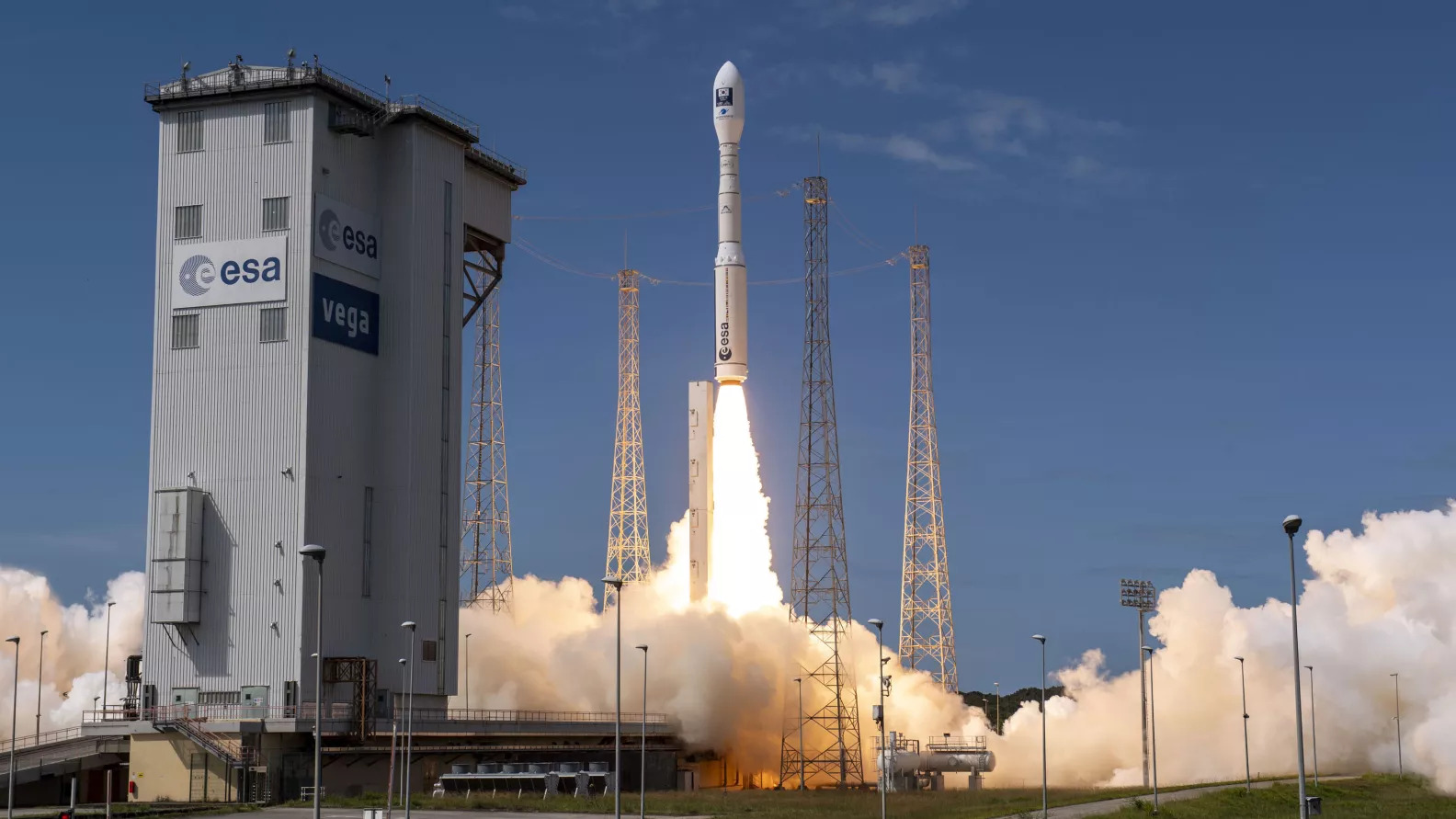Since the end of the Second World War, the aeroplane has revolutionised international relationships. The United States became the primary air power in the world and used it widely to develop its influence. Europe is today an incomplete air power because of its dispersion in the field of military aviation.
Geopolitics of the Air and the Destiny of Europe
Admiral Mahan and Halford Mackinder each spoke in his time of the geopolitical shake-up that was brought about by maritime transport and the railways. The tremendous growth of aviation also modified the power balances between countries, but it was after the Second World War that aviation really began to transform international relations by dint of the incredible acceleration that aviation afforded to technological progress. By way of example, in the nineteen fifties Raymond Aron(1) highlighted the extension of diplomacy brought about by the arrival of bombers that could reach the speed of sound and which had a range of several thousand kilometres. The ability for countries to exercise their political influence or military power thousands of kilometres from their home territory then revolutionised the field of inter-state relationships and led to building hitherto unknown diplomatic groupings.
Aviation in particular offered some states the modern means to pursue global policies. The navy had for centuries been their preferred instrument for expanding commerce and influence and in some cases for building vast empires. In some respects during the inter-War years and after the Second World War, aviation replaced the navy as the instrument of power on an international level.
General Gallois defined geopolitics as the study of the relationship between the conduct of power politics on an international level and the geographical framework in which it takes place.(2) As a new means of applying influence and coercion, air power overturns long-established forms of geopolitics and sets in motion a new order of space and time. That is not to say that it changes the nature of geopolitics as such, more that it establishes a new pattern. It is worth noting that the first geographers to be interested in political changes brought about by the arrival of the aeroplane published isochronal maps, the first types of which had been published in the eighteen eighties as charts that represented the contraction of space and time afforded by maritime transport.(3)
This article does not intend to go back over the history of how the aeroplane changed international relations but to highlight the major characteristics of this new instrument of power then to outline European stakes in the changing power balances in the air domain.
The peaceful and coercive power of aviation
This new instrument of political power was developed by the principal countries before the Second World War, and authoritarian and democratic states alike put on countless demonstrations to show off their capabilities in the air. One of the most spectacular was the Marshal Italo Balbo’s air cruise in which he took 24 Savoia-Marchetti seaplanes from Rome to Chicago. On 15 July 1933, the very day on which the fascists landed on Lake Michigan, in Rome Mussolini signed the Four-Power Pact with Germany, the United Kingdom and France to create at his initiative a kind of European management board through which the main Western European powers could deal with the big political questions of the day. The date had been carefully chosen and illustrates perfectly the link between air power and diplomatic influence. Other examples could be cited: the ‘black cruise’ of General Vuillemin’s 30 Potez aircraft in Africa in November 1933, the record flight of a Mitsubishi plane from Tokyo to London in 1937, the demonstration of the brand new Boeing B-17 Flying Fortress bombers during a tour of Latin America in February 1938 and the Berlin to New York dash of the German four-engined Focke-Wulf 200 Condor in August 1938.
These demonstrations illustrate what General William Mitchell defined as the capability to act in the air, which means to transport all kinds of things in an aeroplane from one place to another, and since the air covers the entire earth there is nowhere that can escape the influence of the aeroplane.(4) This influence can be peaceful, limited to the economy, society or diplomacy but it can also be coercive through the use of armed violence. The civilising influence of aviation soon appeared after the beginnings of heavier than air flight at the turn of the twentieth century. It remains very present despite the fear of a knockout blow from the air, which was widespread the United Kingdom between the two World Wars. Fortune magazine published in April 1943 an article entitled ‘The Logic of the Air’, in which it described the aeroplane as an instrument of peace and prosperity: the logic of the air, it wrote, was founded on the fact that the air is an ocean of blue water accessible by every nation for commerce of every kind and for creating high strategy. It added that the former idea that led to the incorrect representation of a world divided between land and sea was as out-dated as the Great Wall of China.(5)
And yet while Fortune was pushing these pacific and rather utopian views, the US Eighth Air Force and Bomber Command were getting ready to launch the most ferocious air attack ever, to ignite a firestorm in Hamburg by a conscious mix of high-explosive bombs and incendiaries. Fifty years later, having abandoned carpet bombing and started favouring targeting of the adversary’s centres of gravity with precision-guided munitions, aviation achieved spectacular success against Iraq in 1991 and again against Serbia in 1999 during Operation Allied Force, which almost exclusively used air power during a 78-day campaign of bombardment.
Today, however, it is the peaceful, economic and social aspects that are the most significant. In its civil form, aviation is a powerful sector of the economy, both industrially, with big aeronautical groups, and commercially, with airlines. But above all, air transport has become the powerful catalyst of the global village and of the globalised and connected society by encouraging trade and social and cultural exchange. According to the World Bank,(6) the number of people transported annually by air multiplied by 12.8 between 1970 and 2015, going from 310 million 3.9 billion, whilst during the same period air freight increased by 13.3 times, from 16 to 214 billion ton-kilometres. No other means of transport, land or sea, saw the same transformation. World maritime transport ‘only’ increased by a factor of 3 from 1970 to 2008, going from 2.5 billion tons to 8.3 billion, and the projections for 2020 are for 14 to 15 billion tons.(7) For world air traffic, the estimated annual increase is around 6 per cent, which would take the number of passengers to some 6 billion by 2030, in 60 million flights. Whilst care should be taken when comparing these figures, which come from different economic estimates, what can be said is that if globalisation resulted from ‘maritime-isation’, it also did so from ‘aviation-isation’ and that the size of the changes affect both the aviation and the naval sectors.
Asymmetrical distribution of air power
A nation’s expression of air power is dual (its civil and military aspects), as General Paul Jacquin described in a speech in 1948(8) and more recently General Stéphane Abrial in Concept de l’Armée de l’air (Concept of the Air Force) published in 2006. Put briefly, it appears today to be divided between two main geographical areas, the United States and Europe, the rest scattered across other secondary centres, which include Russia, China, India, Japan, Turkey, Israel, South Korea, Canada and Brazil, each of which has its own characteristics. Among the latter could be considered the volume of commercial, military and tourist fleets, existence of national industry for making airframes, engines and equipment, size of the airport infrastructure, schools for aeronautical engineers, pilots and technicians, support from the population and an aeronautical culture.
The United States has been the foremost air power since 1945. In her book on aviation and the American domination, Jenifer van Vleck perfectly defines the role of aviation in American imperial construction from the nineteen forties when she writes that international aviation politics formulated at the end of the war allowed the United States to develop freedom of commerce through an open door doctrine for commercial airlines, and in consequence the skies became the race track of American worldwide power. She adds that during the Cold War the needs of national defence led to regular public funding of the aerospace industry, and that airlines facilitated the international flow of American funding, consumer goods, tourists, technical advisors and arms.(9)
Aviation therefore plays a significant role in the constitution of the American sphere of influence during the Cold War, the more so since that ascendant extends onto the Rimland, which is in places at considerable distances from US soil and which can of course be reached by sea, but far more slowly than by air. General Curtis LeMay, USAF Chief of Staff from 1961 to 1964, put this logic of the air in military-messianic terms when he said: “If we maintain our faith in God, love of freedom, and superior global air power, the future looks good.”(10)
US aviation was dominant during the Cold War and covered the entire range of air power. This was not the case for Europe, which remains an incomplete air power whose strength lies in the industrial success of Airbus, which builds half the airliners produced in the world, several flagship companies such as Dassault, Safran, Rolls Royce, Saab, Thales and Leonardo, and its commercial airlines. These successes are nevertheless somewhat delicate, as is the entire sector. A report from the Commission on strategy and prospection highlighted in 2013 a risk of disappearance of European companies as a result of changes in the air transport market.(11)
Today the worldwide distribution the commercial aircraft fleet seems fairly evenly balanced between Asia and North America (each with 30 per cent) and Europe (with 20 per cent). In 20 years’ time, the fleet will have doubled and regional imbalances will gradually appear between the fleet in the Asia-Pacific region (37 per cent) and the other world centres, whose relative proportion will stagnate or reduce.
Evolution of the distribution of world commercial fleets
|
|
Asia-Pacific |
North America |
Europe |
Latin America |
Middle East |
Russia and central Asia |
Africa |
Total |
|
2017 |
7,360 |
7,210 |
4,900 |
1,560 |
1,500 |
1,180 |
690 |
24,400 |
|
2037 |
18,200 |
10,390 |
8,880 |
3,580 |
3,890 |
1,970 |
1,630 |
48,540 |
That said, the swing of the commercial fleet’s centre of gravity towards Asia-Pacific is above all a reflection of the development of Chinese economic power, since the major balances in world aeronautical production have not changed. Since the nineteen-eighties Europe and the United States have represented 70 per cent of world airliner production, a situation likely to continue and even become greater in the medium term because by 2025 Boeing and Airbus will probably control 40 and 38 per cent respectively of the world production of commercial aircraft. The Chinese COMAC, created in 2008 to build airliners, will only represent one per cent of the civil aviation market, in part owing to the production of its C919, a single-aisle aircraft that competes with the A320 and the B-737, the larger part of whose components are supplied by Western manufacturers.
Incomplete European air power
Europe will therefore remain a major centre for worldwide aeronautical production in the civil sector. The challenge is to add a military component to make it an overall aeronautical power, yet for the moment European aviation is seen purely as a civil and commercial enterprise that concerns only the airlines, infrastructure and organisation of the market, as stated in the EU strategy for aviation, published by the European Commission in December 2015.(12)
The European military aircraft fleet (planes and helicopters), in the broad sense of the 41 members of the European Civil Aviation Conference (ECAC—which includes Turkey, Georgia, Armenia and Azerbaijan), nevertheless remains comparable in size to that of the United States.
European military fleet in 2013(13)
|
|
Combat aircraft |
Transport and tanker aircraft |
Light aircraft and drones |
Helicopters |
Coast-guards |
Total |
|
ECAC |
3,365 |
949 |
1,390 |
3,733 |
- |
9,437 |
|
United States |
3,393 |
2,264 |
2,778 |
5,277 |
200 |
13,912 |
This volumetric comparison gives only a partial indication and is not a real reflection of European aviation capacity. The low number of support aircraft—transport and tankers—and of drones illustrates the unbalanced nature of European air forces. Moreover, it is just a simple addition of the craft held by different countries in a geographical area that is not militarily unified. It should be added that more than 40 per cent of aircraft of the air forces of the 28 countries of the European Union have been manufactured outside the Union’s borders, for the most part in the United States. This dependency is largely explained by the weakness of European military aeronautical industry: while in 2017 US aeronautical industry produced 538 military aircraft and helicopters,(14) European production was only 150. As a last illustration of Europe’s weakness in military aviation, suffice it to say that of the 14,700 combat aircraft in service in the world, 32 per cent are on us origin (F-5, F-16, F-15, F-18), 30 per cent Russian (MiG-21 and MiG-29, Su-27/30) and 6 per cent Chinese (F-7 and J-7).
In that regard, there has been no increase in the military aircraft fleets in Europe or North America (where the first has remained steady and the second has actually reduced), but Asia is not only seeing the growth in commercial fleets but is also developing its military fleet considerably. The growth in military aviation, that is, combat, transport, refuelling, training aircraft and helicopters, in the Asia-Pacific area was estimated at 1 per cent in 2015, 2 per cent in 2016 and 4 per cent in 2018.
For all that, the hierarchy in the various aviation capabilities put into service by different countries should be noted. Some possess essentially defensive capabilities intended to deny access to their airspace while others have force or power projection capabilities. Regional powers should also be distinguished from world powers: the former include states having the facility to employ an air force within their own airspace and in immediate proximity to their borders, and the latter, states that possess air forces that allow them to deploy beyond their regional power space, or a naval-air force or indeed a land-air force.
* * *
At a time when air power is undergoing redistribution and major world geopolitical balances are being reformed, Europe appears to be an area relatively devoid of combat aviation. Even with some 2,000 combat aircraft today, it is only with difficulty that Europe could envisage very long air operations even if they are not excessively costly. Figures would indicate that after 11 days such an air force operating 2 sorties per day and suffering an attrition rate of 3 per cent would have lost 1,000 aircraft, and after a month only 300 aircraft would remain on line.
In the broader context in which ‘the JSF/F-35 programme has considerably weakened Europe’s industrial independence in combat aviation,’(15) the Franco-German project for the New Generation Fighter, which has been joined by Spain, appears to be a lifesaver for rescuing European air power from yet further weakening. As Air Chief Marshal Sir Arthur Tedder, Eisenhower’s deputy in 1944 and Chief of the Air Staff (UK) from 1946 to 1950, said, “airpower is the dominant factor in this modern world and […] though the methods of exercising it will change, it will remain the dominant factor as long as power determines the fate of nations.”(16) ♦
(1) Aron Raymond, De l’analyse des constellation diplomatiques, Revue française de science politique, 1954, vol. 4, n° 2, p. 237-251.
(2) Gallois Pierre-Marie, Géopolitique : les voies de la puissance, L’Âge d’homme, 1990, p. 37.
(3) Bretagnolle Anne, De la théorie à la carte : histoire des représentations géographiques de l’espace-temps, in Volvey Anne, Échelles et temporalités, Atlande, 2005, p. 55-60.
(4) Quoted by Cooper John C., The Fundamentals of Air Power, in Emme Eugene M., The Impact of Air Power, Princeton, D. van Nostrand Company, 1959, p. 128.
(5) Vleck (van) Jenifer, Empire of the Air. Aviation and the American Ascendancy, Harvard University Press, Cambridge, 2013, p. 3.
(6) Data from the international civil aviation organisation, available on the site of the World Bank (https://data.worldbank.org/indicator/IS.AIR.GOOD.MT.K1?end=2017&start=1970&view=chart).
(7) Committee for foreign affairs, defence and the armed forces, La Maritimisation (Information report n° 674), Sénat, 17 July 2012, p. 14-15 (www.senat.fr/rap/r11-674/r11-6741.pdf).
(8) Général Paul Jacquin, La notion de puissance aérienne, Stratégique, n° 64, 1996, p. 53-84.
(9) Vleck (van) Jenifer, op. cit., p. 7.
(10) Engel Jeffrey A., Cold War at 30,000 feet: Anglo-American Technology Controls, Aircraft Sales and Trading with the Enemy at the Dawn of the Jet Age, University of Wisconsin, Madison, 2001, p. 27.
(11) Abraham Claude, Les compagnies aériennes européennes sont-elles mortelles ? Perspectives à vingt ans, Commissariat à la stratégie et à la prospective, 2013 (www.ladocumentationfrancaise.fr/var/storage/rapports-publics/134000597.pdf).
(12) An Aviation Strategy for Europe (https://eur-lex.europa.eu/legal-content/EN/TXT/PDF/?uri=CELEX:52015DC0598&from=EN).
(13) Eurocentrol, Military Statistics, 2014, Version 1.0. (www.eurocontrol.int/sites/default/files/publication/files/2014-military-statistics.pdf).
(14) Aerospace Industries Association, 2018 Facts and figures. US Aerospace and Defense, p. 4-5.
(15) Académie de l’air et de l’espace, Quel avenir pour l’Industrie européenne d’aviation de combat ? Vers une mort annoncée ?, 2011, 4 pages (www.europarl.europa.eu/meetdocs/2009_2014/documents/sede/dv/sede100713aircraftindustry_/sede100713aircraftindustry_fr.pdf).
(16) The French version of this was drawn from: Tedder Arthur (Air Marshal), La Puissance aérienne dans les opérations de guerre (1947) in Lespinois (de) Jérôme, Anthologie mondiale de la stratégie aérienne, La Documentation française, to be published in 2019.






